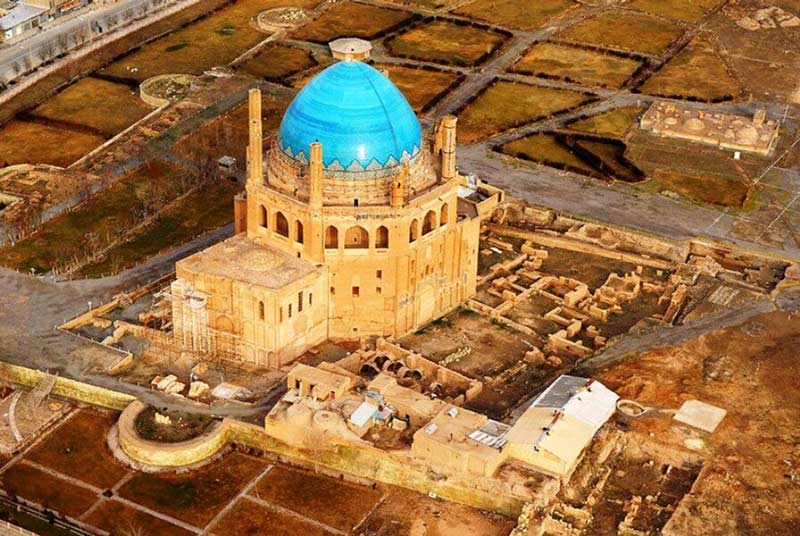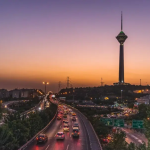Did you know that Soltaniyeh Dome is one of the largest and most impressive brick domes in the world? This magnificent architectural masterpiece was built in the early 14th century as a mausoleum for the powerful Mongol ruler, Il-khan Oljeitu in Zanjan city, northwestern Iran. The dome is approximately 50 meters tall, decorated with intricate calligraphy and geometric patterns in turquoise color and surrounded by eight minarets. Its impressive size, intricate design, and historical significance make it a masterpiece of Iranian architecture. So what makes the Soltaniyeh Dome so remarkable?
First off, for a trip to Iran, you need to apply for a prompt Iran Visa. The Soltaniyeh Dome has been registered on the UNESCO World Heritage List and is considered one of the most important works of Iranian architecture during the Islamic era. Its impressive size and intricate design have earned it a place as the second-largest brick dome in the world, surpassed only by the dome of the Florence Cathedral, also known as Santa Maria del Fiore and listed before the Hagia Sophia Mosque in Istanbul that stands the third-largest dome in the world.
To visit Soltaniyeh Dome, don’t hesitate to look into our Iran World Heritage Tour.
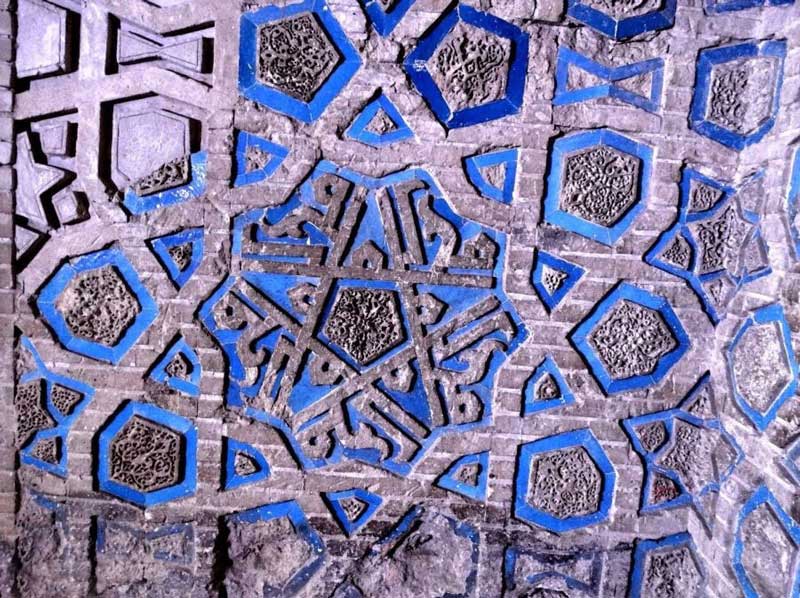
Some jaw-dropping features of Soltaniyeh Dome
There are also some fascinating secrets and mysteries surrounding this ancient architectural masterpiece that adds to the allure and mystique of the Soltaniyeh Dome, making it a fascinating destination for enthusiasts:
- Inspiration for the Gothic style: In fact, Filippo Brunelleschi, the famous Italian architect and engineer of the 15th century, and Lorenzo Ghiberti, an Italian sculptor, architect, and writer, were inspired by the design of the Soltaniyeh Dome when they were creating and building the dome of the Santa Maria del Fiore church in Italy.
- Inspiration for the Taj Mahal: Arthur Pope believes that the design of the Taj Mahal in India was influenced by the Soltaniyeh Dome and that it served as a model for its construction.
- Strange foundation: Interestingly, the foundation is only about half a meter deep, but the building is very strong. Despite weighing about 1,600 tons, it has only sunk eight centimeters in 700 years. The dome has also withstood 33 earthquakes, the strongest being a 6.0 magnitude earthquake.
- Double-shell structure: Demonstrating the intelligence of the architect, the double-shell structure creates a hollow space making the dome resistant to earthquakes.
- Diverse entrance gates: There were four gates of different sizes for entering the Soltaniyeh Dome. The larger entrances (eastern and northwestern entrances) were used by men, while the smaller entrances were used by women. The smaller entrances led to small halls on the first floor.
- Hidden chambers: Based on the historical facts it was possible that the dome contains hidden chambers or passageways used for various purposes like storing treasures or a secret escape for the ruling elite.
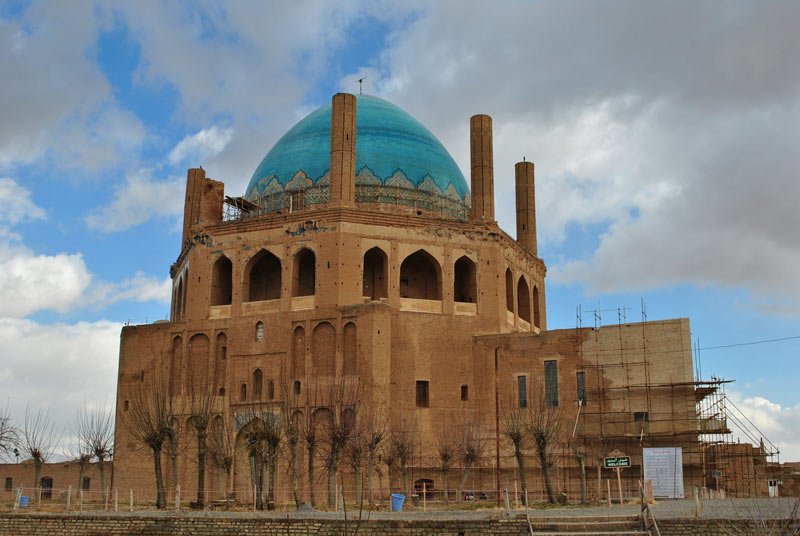
Who built the Soltaniyeh Dome?
The Soltaniyeh Dome was built in the early 14th century by the Ilkhanid ruler, Oljeitu, as a mausoleum for his father, Ilkhan Oljeitu, who was a powerful Mongol ruler. The dome was completed in 1312 CE and is located in the city of Soltaniyeh, which was the capital of the Ilkhanid Empire at the time.
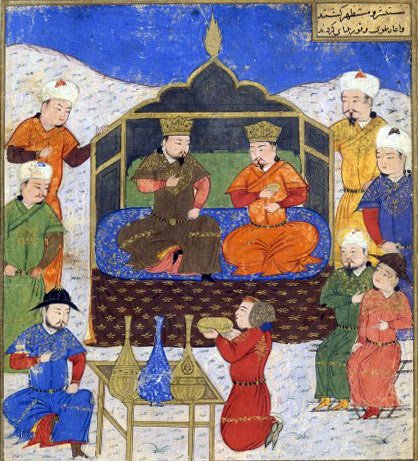
Architecture and Design
The Soltaniyeh Dome is an excellent example of the architectural style of the Ilkhanid period, which combined elements of Persian, Arab, and Mongol cultures. The dome is made of brick and is approximately 50 meters (164 feet) tall, with a diameter of 25 meters (82 feet). It is surrounded by eight minarets, which are also made of brick and decorated with intricate tilework.
The dome is adorned with beautiful calligraphy and geometric patterns, which are typical of Iran after Islam art. The interior of the dome is equally impressive, with intricate plasterwork and tilework, as well as colorful mosaics and murals.
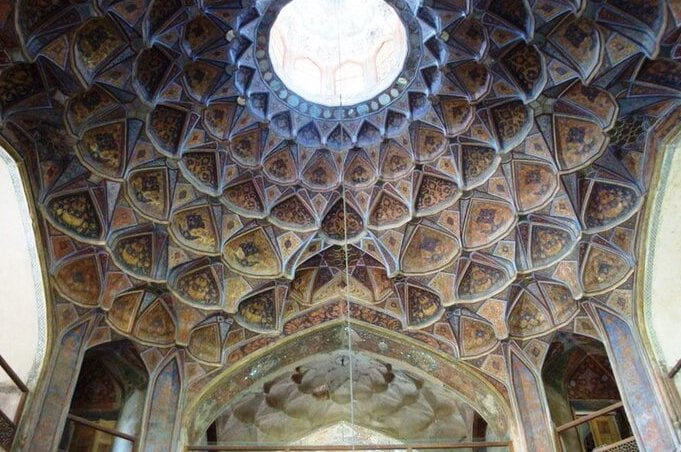
Why is Soltaniyeh Dome in Iran recognized as a UNESCO world heritage?
UNESCO recognizes the exceptional universal value of Soltaniyeh Dome and added it to its World Heritage list in 2005 to ensure its protection and preservation for future generations. Here are some of the reasons why:
- The Soltaniyeh Dome is an outstanding example of the achievements of Persian architecture and engineering in the 14th century.
- The Soltaniyeh Dome represents a unique type of architecture, which combines elements of Persian, Anatolian, and Central Asian styles.
- The Soltaniyeh Dome is an exceptional testimony to the cultural and artistic traditions of the Ilkhanid dynasty.
- The Soltaniyeh Dome is an outstanding example of a type of architecture that has now disappeared, making it an exceptional testimony to the history of architecture.
- The Soltaniyeh Dome has a strong association with historical events and ideas that have had a significant impact on the development of civilization.
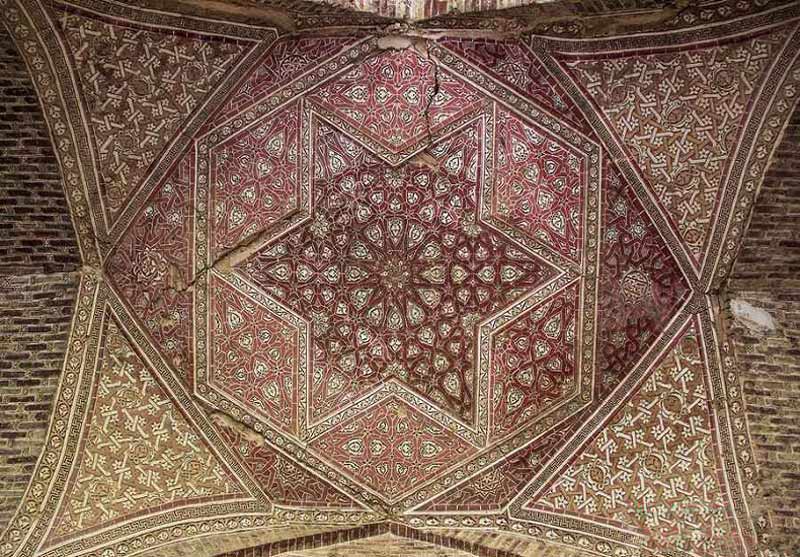
When to visit Soltaniyeh Dome?
The best time to visit the Soltaniyeh Dome is during the spring (March to May) and autumn (September to November) seasons when the weather is mild and pleasant. The summer months (June to August) can be very hot, with temperatures reaching up to 40°C (104°F), while the winter months (December to February) can be cold and snowy.
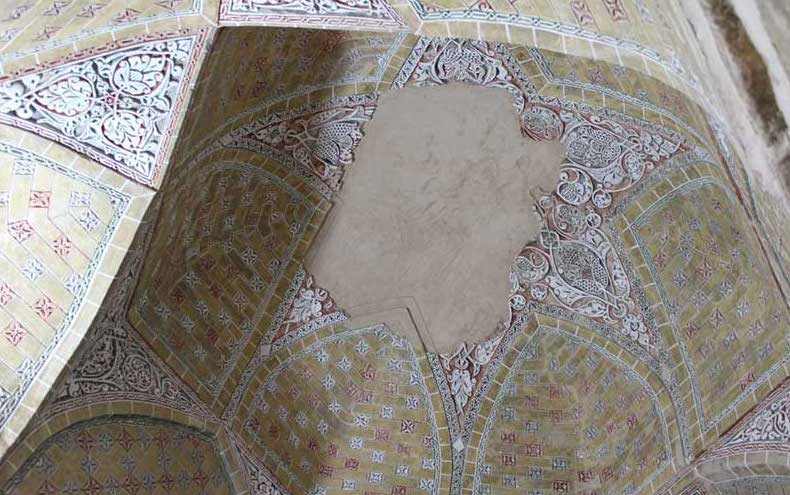
Where is the Soltaniyeh Dome located?
The Soltaniyeh Dome is located in the city of Soltaniyeh near Zanjan about 340 kilometers northwest of Tehran.
What to visit in Iran after Soltaniyeh Dome?
We have included Soltaniyeh Dome in Iran World Heritage Tour and Biblical Trip in Iran. These packages offers a unique opportunity to explore the rich cultural and historical heritage of the region, including the stunning World Heritage monuments. Our tour packages offer a comprehensive and immersive experience of Iran’s diverse culture, architecture and nature at reasonable rates.
If you’re interested in exploring more of Iran’s cultural and historical treasures, there are many other destinations worth visiting. Here are a few suggestions:
Tabriz: Located about 190 kilometers east of Soltaniyeh is home to several historical sites like UNESCO-listed Tabriz Bazaar and the Blue Mosque.
Ardabil: Located about 200 kilometers northwest of Soltaniyeh is famous for its hot springs, the UNESCO World Heritage Sheikh Safi al-din Khanegah and Shrine Ensemble and Sabalan Mountain. You may like to check Mount Sabalan Tour Packages.
Alvand: This mountain range is located about 60 kilometers west of Soltaniyeh. It is a popular destination for skiing and snowboarding during the winter months and offers stunning views of the surrounding landscape.
Hamadan: Located about 270 kilometers southwest of Soltaniyeh is home to the Tomb of Esther and Mordechai, the Ganjnameh Inscriptions.
Qazvin: Located about 120 kilometers southeast of Soltaniyeh has many attractions, including the UNESCO-listed Chehel Sotoun Palace and the Alamut Castle.
Tehran: The capital city of Iran is a vibrant metropolis with many cultural and historical attractions, including the National Museum of Iran, and the Golestan Palace.
Persepolis: Located in the southwestern province of Fars, Persepolis is an ancient city that was once the capital of the Achaemenid Empire. The city is home to stunning ruins, including the Gate of All Nations, the Apadana Palace, and the Hall of 100 Columns.
Isfahan: Known as the “half of the world,” Isfahan is a beautiful city with a rich history and stunning architecture. Highlights include the Naqsh-e Jahan Square, the Chehel Sotoun Palace, and the Shah Mosque.
Shiraz: Located in the southern province of Fars, Shiraz is known for its beautiful gardens, historic mosques, and vibrant bazaars. Highlights include the gardens of Eram and Narenjestan, the Vakil Mosque, and the Nasir al-Mulk Mosque.
Let us know your experiences of visiting or your questions about the Soltaniyeh Dome in the comment box below, we will be happy to hear from you!

